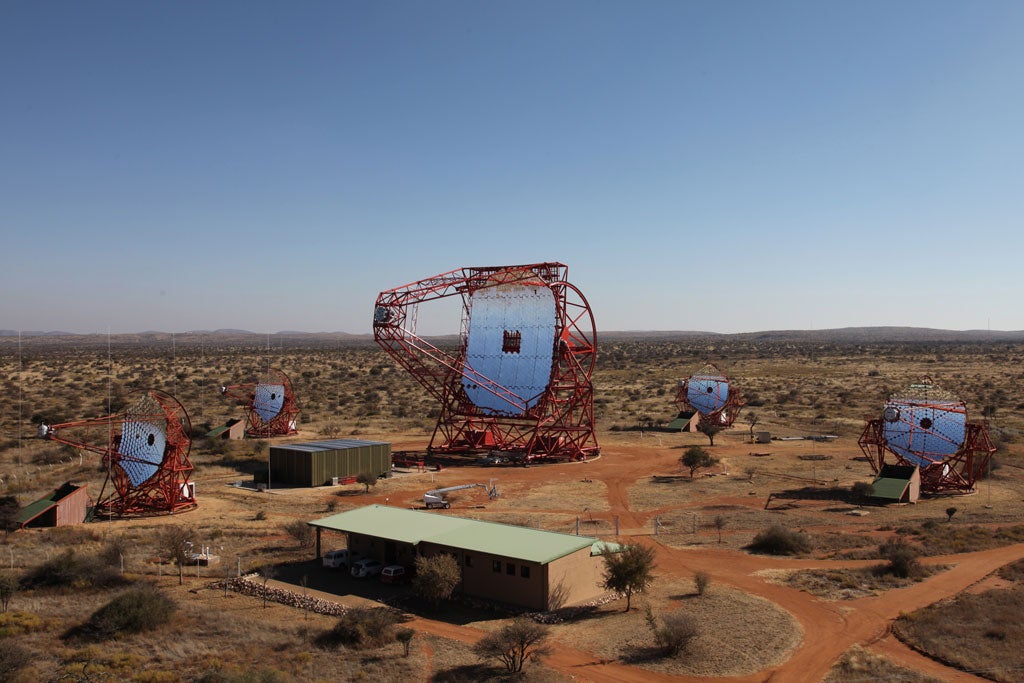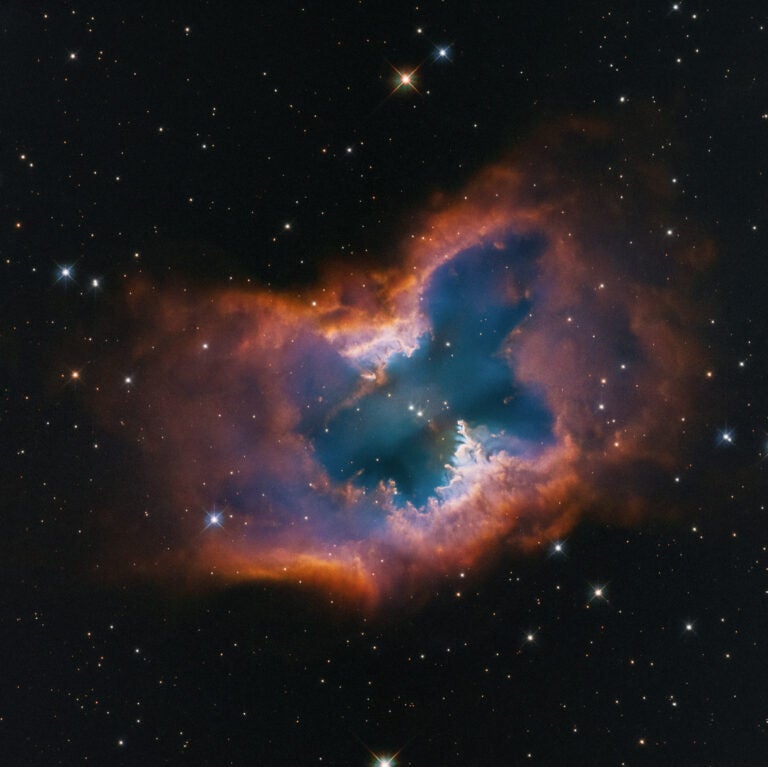With a mass of almost 600 tons and its 92-foot-wide (28 meters) mirror — the area of two tennis courts — the new arrival is huge. It saw its first light at 12:43 a.m. (German time zone) July 26, 2012, detecting its first images of atmospheric particle cascades generated by cosmic gamma rays and cosmic rays, marking the next big step in exploring the southern sky at gamma-ray energies. “The new telescope not only provides the largest mirror area among instruments of this type worldwide, but also resolves the cascade images with unprecedented detail, with four times more pixels per sky area compared to the smaller telescopes,” said Pascal Vincent of the Universite Pierre et Marie Curie in Paris responsible for the photo sensor package at the mirror’s focus.
Researchers believe gamma rays are produced by natural cosmic particle accelerators, such as supermassive black holes, supernovae, pulsars, binary stars, and maybe even relics of the Big Bang. The universe is filled with these natural cosmic accelerators, impelling charged particles like electrons and ions, to energies far beyond what man-made particle accelerators can reach. As high-energy gamma rays are secondary products of these cosmic acceleration processes, gamma-ray telescopes allow us to study the sources. Today, scientists know of well over 100 cosmic sources of high-energy gamma rays. With H.E.S.S. II, processes in these objects can be investigated in superior detail, in addition to finding new sources and classes. In particular, H.E.S.S. II will explore the gamma-ray sky at energies in the range of tens of billions of electron volts — the poorly explored transition regime between space-based instruments and current ground-based telescopes, with a huge discovery potential.
The most extreme gamma-ray emitters — active galactic nuclei — have an apparent gamma-ray output, which is 100 times the luminosity of the entire Milky Way, yet the radiation seems to emerge from a volume much smaller than that of the solar system, and turns on and off in a matter of minutes — a strong signature of supermassive black holes. For some of the objects seen with the four H.E.S.S. telescopes in the last years, no counterpart at other wavelengths is known; they may represent a new type of celestial object that H.E.S.S. II will help to characterize.
When gamma rays interact high up in Earth’s atmosphere they generate a cascade of secondary particles that can be imaged by telescopes on the ground and recorded in their ultra-fast photo sensor “cameras,” thanks to the emission known as Cerenkov radiation — a faint flash of blue light. The high-tech camera of H.E.S.S. II is able to record this flash with an exposure time of a few billionths of a second, almost a million times faster than a normal camera. The H.E.S.S. II camera, with an area of the size of a garage door and a weight of almost 3 tons, is “flying” 118 feet (36 meters) above the primary mirror in the focal plane. Despite its size, the new telescope will be able to slew twice as fast as the smaller telescopes to immediately respond to fast and transient phenomena, such as gamma-ray bursts, anywhere in the sky.
“The successful commissioning of the new H.E.S.S. II telescope represents a big step forward for the scientists of H.E.S.S., for the astronomical community as a whole, and for Southern Africa as a prime location for this field of astronomy,” said Werner Hofmann, spokesperson of the project. “H.E.S.S. II also paves the way to the realization of the Cerenkov Telescope Array (CTA), the next generation instrument ranked top priority by astroparticle physicists and funding agencies in Europe.”










